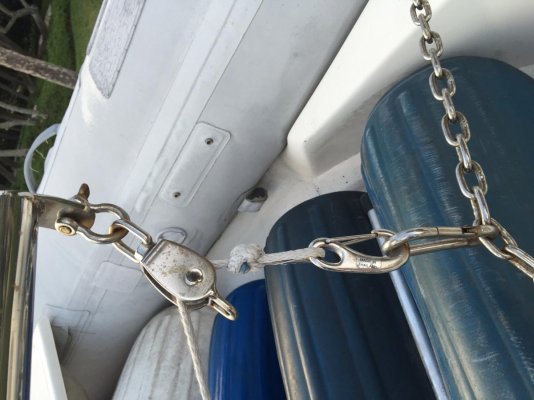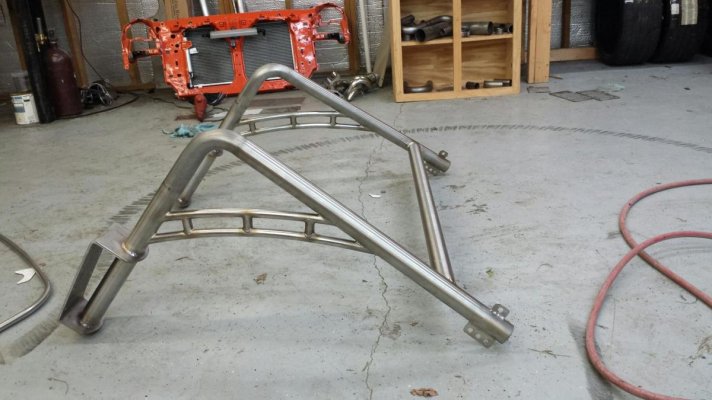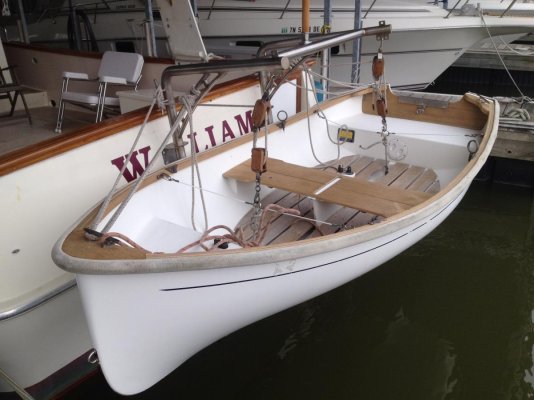Pack Mule
TF Site Team
- Joined
- Jan 24, 2013
- Messages
- 3,749
- Location
- USA
- Vessel Name
- Slo-Poke
- Vessel Make
- Jorgensen custom 44
When I had my davits built I could not get the pick up points spaced far enough apart to meet up with the pickup up points on the dinghy. I had to work around a transom door on the starboard side. My davit points are about 6" in on each side from the dinghy pick up points. To get the dinghy up to the height I want my blocks have to get pretty close together and they are splayed out too much and the line starts to climb out of their pulleys.The closer the blocks get together the harder it is to pull the dinghy up . Anybody got any suggestions? I know I could redrill my padeys in the dinghy but that's adding more holes 





 . I think my first mate is starting to loose a little confidence in me on this situation. I get the
. I think my first mate is starting to loose a little confidence in me on this situation. I get the 
